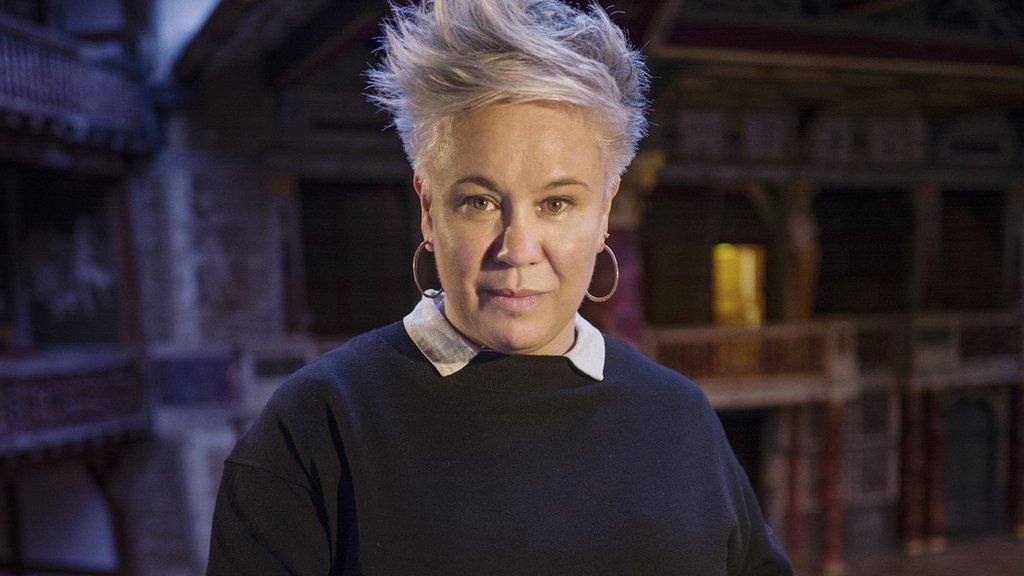Shakespeare's Tempest gets mixed reality makeover
- Published
Shakespeare show blurs lines of reality
"Oh brave new world that has such people in it," says Miranda at the end of Shakespeare's The Tempest.
She is referring to the humans but magic is at the heart of the play and at the Royal Shakespeare Company theatre in the bard's birthplace of Stratford-upon-Avon, technology is playing a big role in bringing that to life.
Hovering above the stage is a blue figure - nicknamed Mushy by the crew - a virtual version of Ariel, Shakespeare's shape-changing sprite.
Lurking in the shadows is cyber-thespian Mark Quartley, speaking the words of Ariel and also controlling the movements of Mushy.

Ariel appears as an avatar...
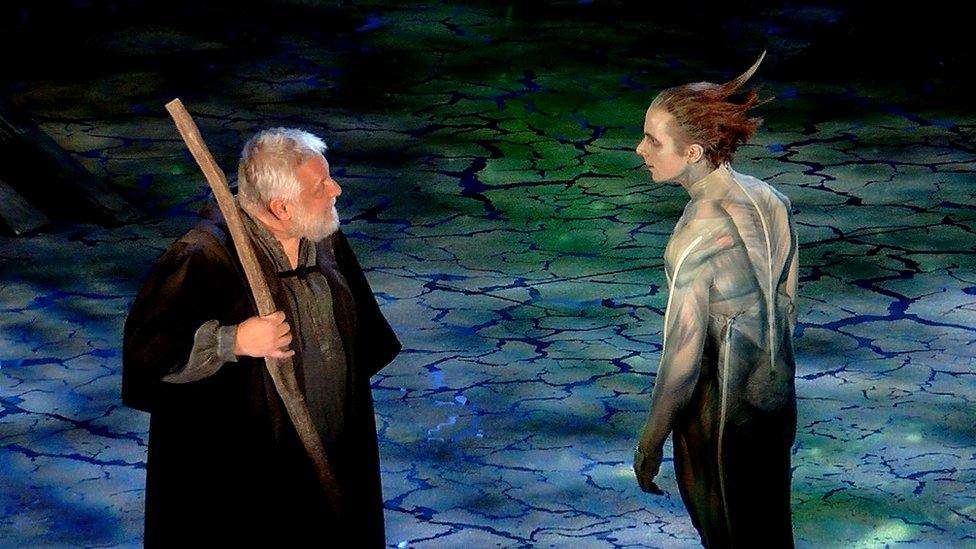
...and as a human actor
He is wearing a motion-capture suit that allows him to dictate the movements of the avatar in real time.
"I'm thinking of it as one character. For me it is just a character with superpowers. He gets to divide into many different forms, fly around the stage, burst into flames. I suppose it feels quite powerful in hopefully a non-egotistical way."
It wasn't just his ego he had to curb; he refers to rehearsals as feeling somewhat "schizophrenic".
"I was spending a lot of time in the main rehearsal room, working on it like any other play, developing relationships with Prospero and other characters in the play, getting to grips with the text.
"Then at the other side of the scale, I'd be rigging myself into the sensor suit working with the avatars finding the best ways to make them perform and do exciting things."
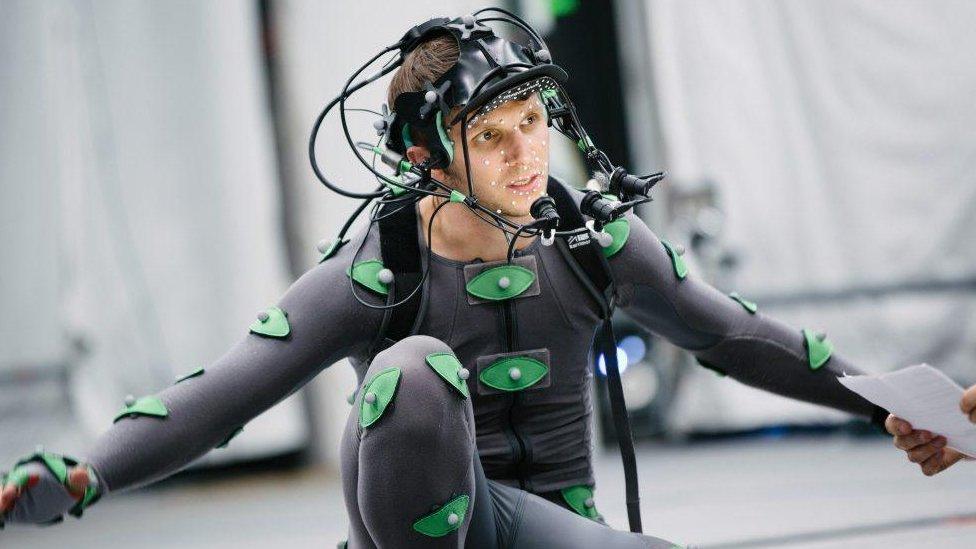
Mark had to swap between technical and normal play rehearsals
Technical rehearsals have been taking place for three weeks at the theatre with technical partners Intel and Imaginarium Studios, which has created motion-capture effects for a range of Hollywood movies,
Imaginarium's Bren Jordan admitted that bringing the technology to the stage had involved a "great deal of blood and sweat".
"We've been through about five or six previews now and each one we've fixed another problem. The very first preview, basically everything went wrong from our point of view," said Mr Jordan.
The suit that Mark wears is highly sensitive to magnetic fields and is normally used in a fairly sterile environment - ideally an empty room.
"We've brought it into this theatre, surrounded by 27 projectors, hundreds of lights, hundreds of speakers, big metal girders under the stage and pretty much putting it through its paces in terms of what it can cope with," said Mr Jordan.
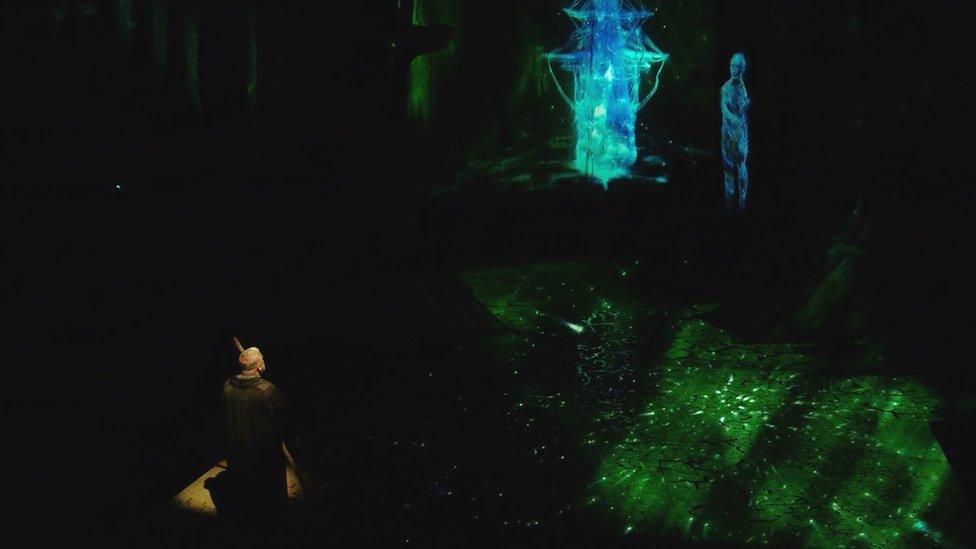
Ghostly projections are mixed with the motion-capture technology
As a result, it was discovered that some positions Mark adopted meant the sensors on the suit failed to connect to the system.
"We've had to pull back a little bit of the performance so that it is isolated in just the areas that we know it is going to work well. We need to make sure it works consistently every night so we have had to say, 'OK, we can do the performance here but we can't do it here.'
"Little things like that that we've had to find the solution for."
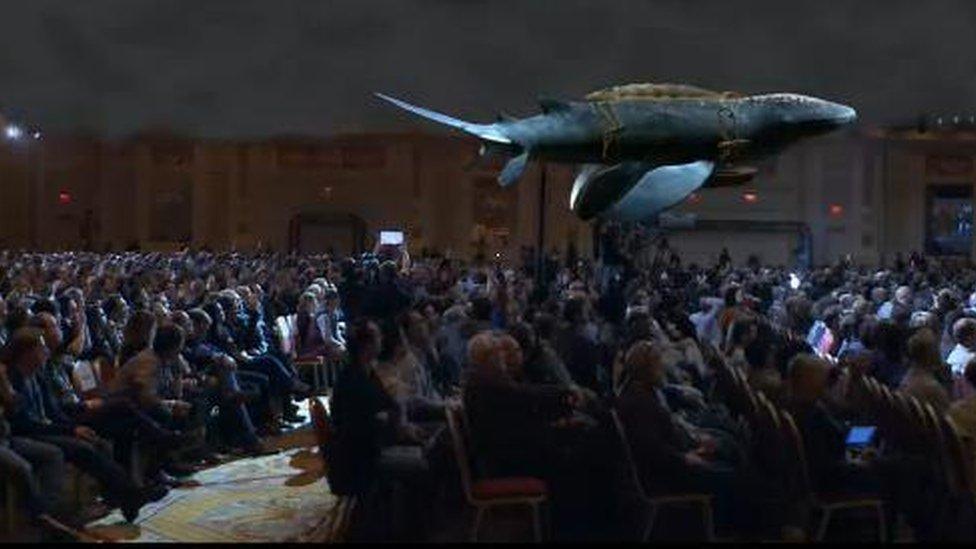
Intel's flying whale was the inspiration for the technology in The Tempest
The studio has been working for over a year on pre-production with the RSC and been through many iterations of Ariel. But the partnership with Intel actually began three years ago at the most unlikely of places - the CES technology show in Las Vegas.
"We flew a giant virtual whale over the consumer electronics show and Sarah Ellis from the Royal Shakespeare Company saw the flying whale and showed it to Greg Doran, the creative director, and his answer was, 'I want that'," said Intel's director of client research, Tawny Schlieski.
Some would say that director Doran was the bravest man in theatre for taking on such a challenge but he said that it was a "wonderful opportunity" to marry digital and analogue.
He is convinced the final result is both in keeping with the play and with how Shakespeare would have liked to show it off.
At the end of Shakespeare's career, an entirely new form of theatre was emerging - the Jacobean masque tradition, which was the multimedia theatre of its day.
Productions put on at court could cost the equivalent of near to £1m to stage and utilised a range of effects.
"They involved stage machinery, lighting effects and all sorts of extravagant ways of clouds opening and chariots descending from the gods, scenery turning round," said Mr Doran.
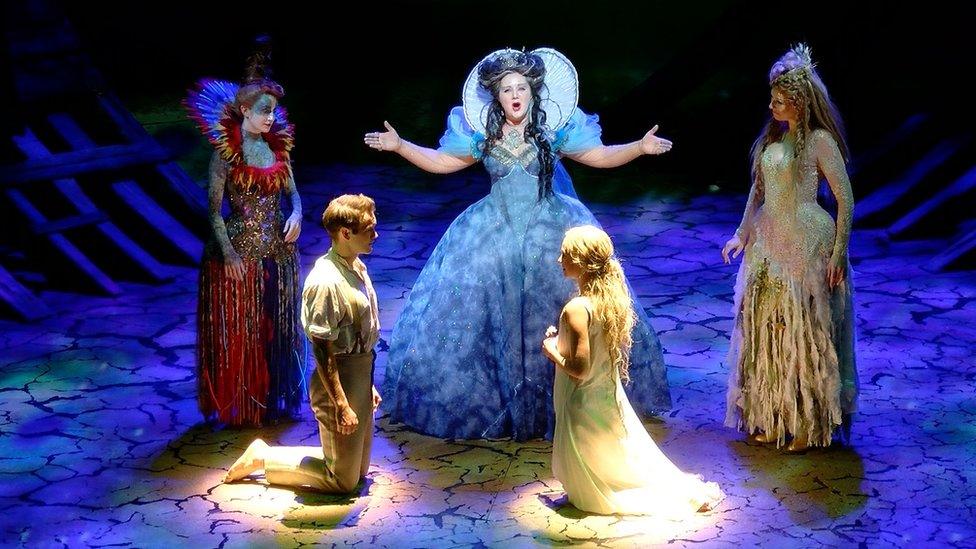
The Tempest is regarded as one of Shakespeare's most technically advanced plays
"What Shakespeare is tapping into is some of the latest cutting-edge technology in 1610 and referencing that in his work. I am absolutely sure that if Shakespeare was alive today he'd be going, 'Give me some more of that.'"
Theatre has traditionally embraced technology. In Victorian times, John Henry Pepper showed off a technique that became known as Pepper's Ghost at a theatrical production of Charles Dickens's The Haunted Man and theatregoers were suitably impressed.
Reaction from a digitally cynical 21st Century audience was, according to Mr Doran, equally good.
'There were some pretty astonished faces. It is quite mind-blowing when you see it for the first time. It is amazing technology when you can harness it. It takes quite a while to harness it but I think it is a brave new world."

Analysis by Jane Wakefield

The production utilises some effective projected backdrops
I haven't seen the whole play but did sit in on rehearsals for a couple of scenes.
There is a magical quality to seeing an other-worldly sprite flying above the stage but there was also a mismatch - the audience can hear Mark in the shadows and can see him moving to make the avatar perform and it is hard to know whether to watch him or the projected version of himself.
The avatar itself feels strangely separate from the play - like an add-on rather than an integral part of the action. And, given that it is intended to give Ariel superpowers, it felt rather limited in what it could do.
Many hardened theatregoers will disapprove of the use of technology, believing that the theatre is a place for actors and the imagination of the audience.
This backlash was most apparent when Emma Rice announced that she would step down as artistic director of The Globe theatre earlier than planned, after criticism of her use of contemporary sound and lighting technology.
Oddly, the most impressive part of the RSC's The Tempest, in technical terms at least, is the altogether more old-fashioned projection work that conjures up ghostly ships and other amazing backdrops.
- Published25 October 2016
